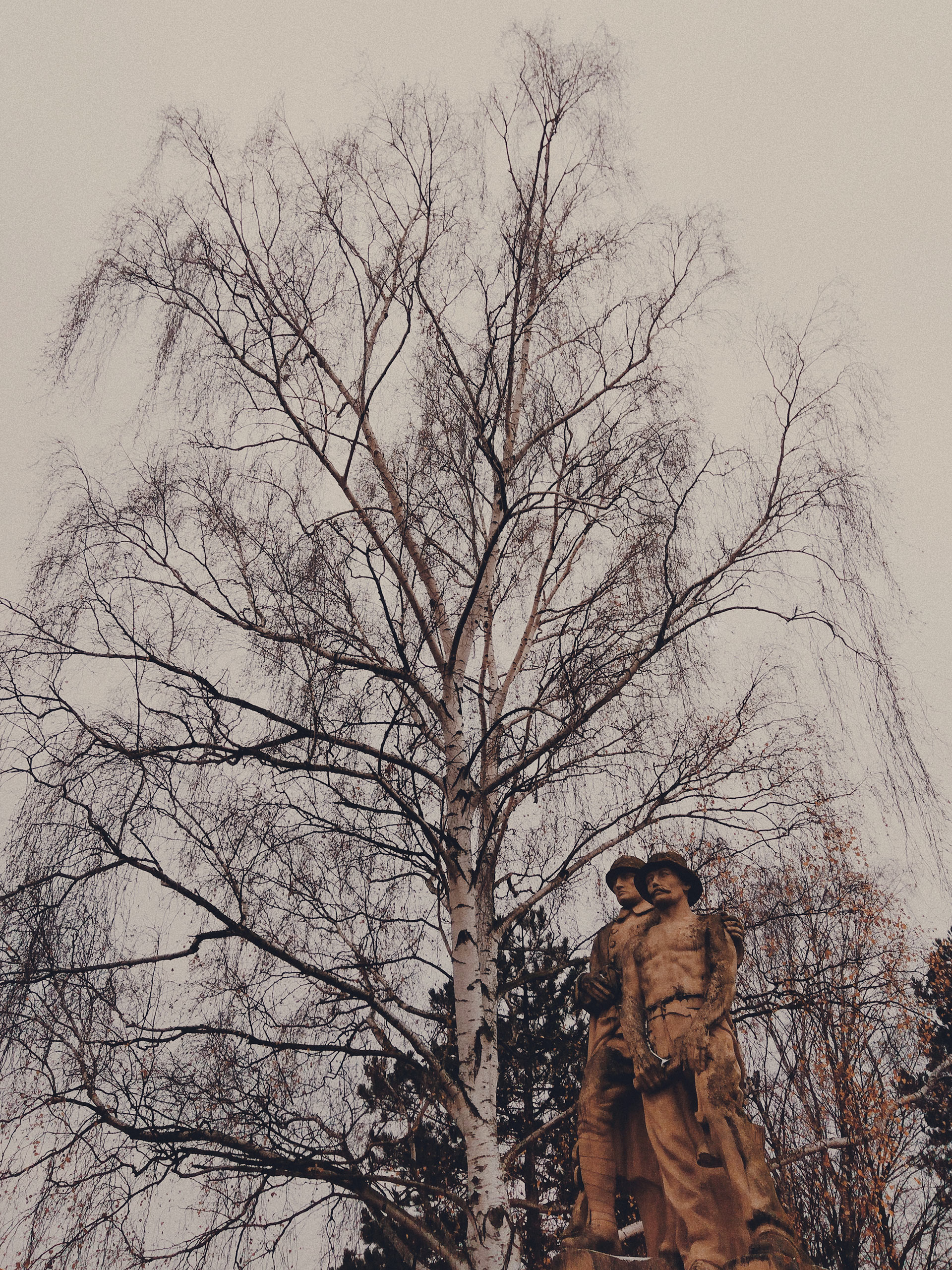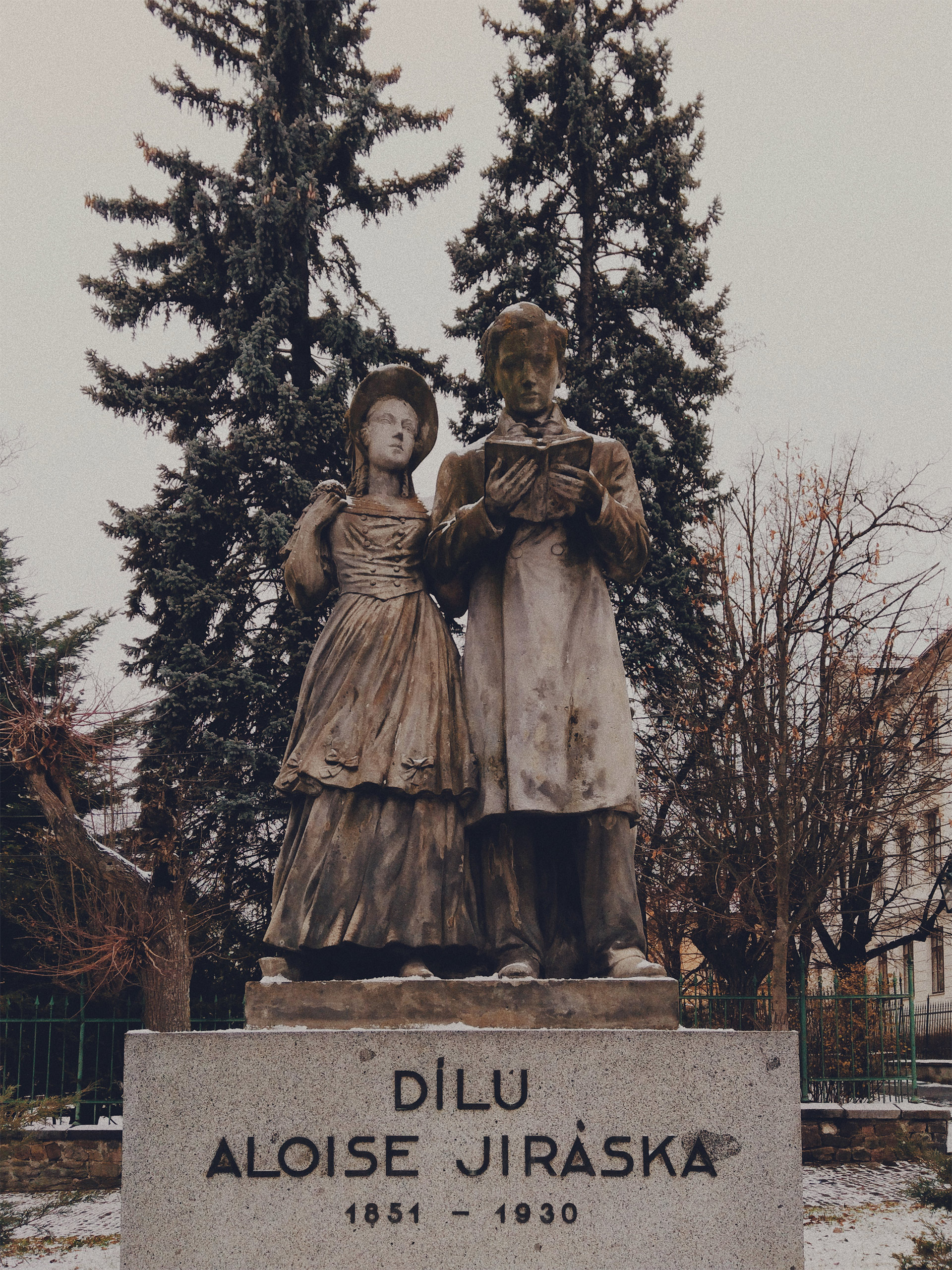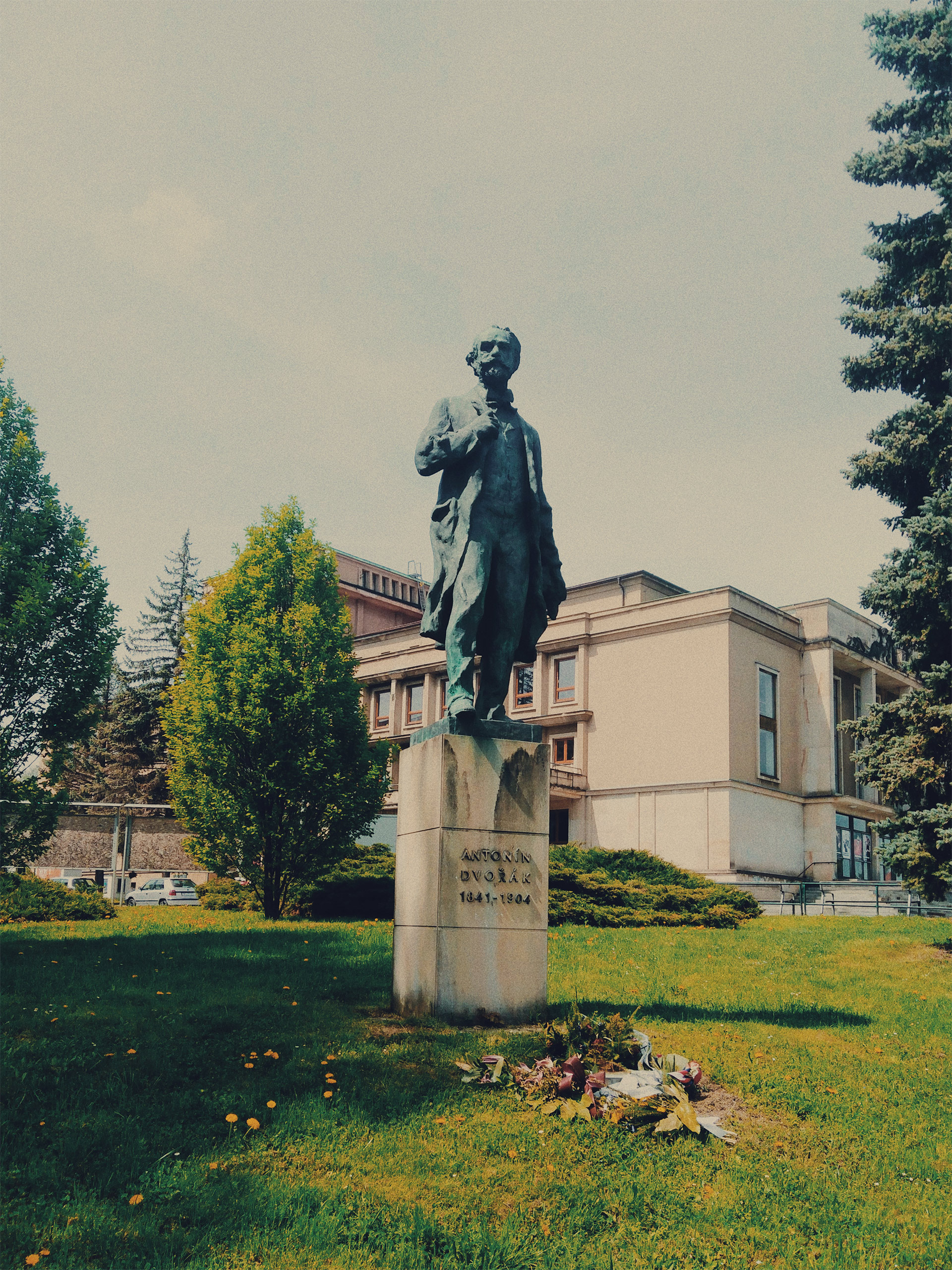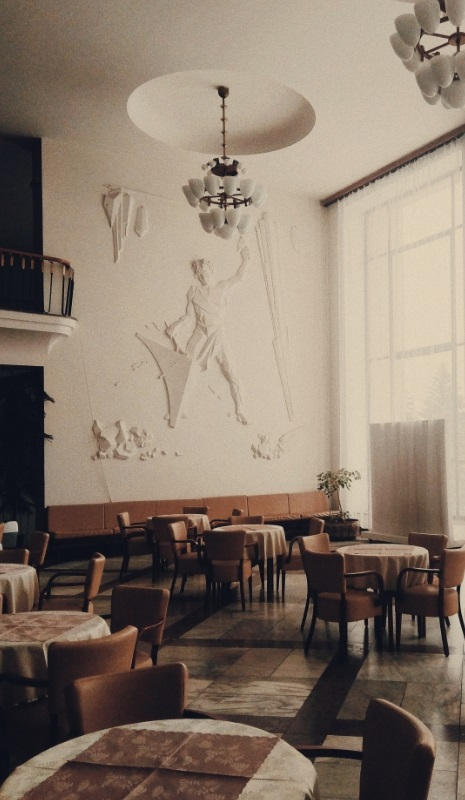Příbram statues
We walk by them regularly and don't even think about them. Příbram's statues have interesting stories behind them and often also famous designs by well-known authors.
1. MUSIC (JOSEF VÁCLAV MYSLBEK)

Josef Václav Myslbek has long been concerned with the idea of sculpting the motif of music. He started work in 1892, but for ten years he laboriously searched for the final form in many sketches and studies of various concepts and approaches. The idea of the second sketch, the figure of a girl wrapped in an artfully draped drapery, pressing a stringed instrument, the Bohemian varietto, to her heart and mouth, gradually became the closest to him.
Myslbek worked on the final concept of the allegory of Music until 1907. In 1913 it was cast in bronze and on 5 January 1914 it was installed in the foyer of the National Theatre in Prague. The original plaster cast is in the theatre in Příbram. Unfortunately, neither the time nor the origin from where the statue came to the theatre is known.
An interesting stone figural relief on the attic is located above the main entrance to the theatre, its author Bedřich Stefan. The three seated female figures are an allegory of theatre, music and poetry. In the centre, a woman sits on a throne facing the visitors. In their raised hands they hold theatrical masks (comedy and tragedy). On the left, with her back to the central motif, sits a female figure accompanied by a swan and a column on which stands a pegasus. The right figure is shown with a fish (dolphin) and a lyre. On the 'floor' are depicted objects of artistic creation, such as musical instruments, painting palettes or books.
2. MONUMENT TO THE FALLEN CITIZENS OF THE BIRCH MOUNTAINS (VÁCLAV ŠÁRA)
The tenth anniversary of the Czechoslovak Republic was approaching. Therefore, in many villages, monuments were created to commemorate the fallen in the First World War. Příbram sought such a monument as early as 1917, but financial and other problems arose and Březové Hory (then still independent) had it faster. Václav Šára completed it in 1927. The monument was placed in the area behind the Church of St. Prokop. The unveiling took place on 6 July, at the same time as the Březohorské festivities. It is said that the festive procession was so large that it did not even fit in front of the monument.
The celebrations, which lasted from 3 to 10 July and were attended by natives and guests from all over the country and abroad, also included exhibitions in both Březohorské schools. Václav Šára was among the local artists exhibiting.
The memorial to the fallen sons of Březové Hory is carved out of Horice sandstone. On the pedestal stand two larger-than-life figures, a French legionnaire and a miner with a hammer and a cauldron one step below. In the centre of the pedestal is a stooped figure of a female nude with drapery, probably an allegory of the conquered homeland. Even then, the location of the monument was a matter of debate. Critics blamed the fact that the monument stands away from the city. They suggested the space in the upper square in front of the school as a more suitable location. The sculpture was finally moved in 1959 to the lower Hynka Klicka Square.
3. THE WORK OF ALOIS JIRÁSEK (VÁCLAV ŠÁRA)
"It is not a bust or a statue of Alois Jirásek, but a beautiful sculpture of two young souls in love, as we read about them in Jirásek's Philosophical History," wrote Horymír. On Sunday, 11 September 1938, a monument to the work of Alois Jirásek was unveiled. The procession that preceded the ceremony went from the railway station, down Plzeňská Street, through the square and along Pražská Street to Jirásek Gardens. Even Jirásek's daughter Miloslava Pragerová was among those present.
The two students depicted in the monument are Vavřena and Lenka, the main heroes of Jirásek's novel. This is probably the scene when Vavřena confesses her love to Lenka through Mácha's May. The sandstone sculpture itself is 1.8 metres high and weighs 1.3 tonnes. It took four hours to transport and place it on the pedestal.
The proposal for the construction of this monument originated in the late 1920s among the professors of the Příbram schools. They wanted a worthy monument to the writer and honorary citizen of Příbram Alois Jirásek to be erected on the occasion of the 20th anniversary of the Czechoslovak Republic. Václav Šára was approached for this work.
Šára made the first model of the sculpture in 1930, when the Příbram Landscape Department of Professors (as the initiator of the construction) exhibited it at the local landscape exhibition. The resulting monument differs from Šára's original sketch in a few minor details, for example, Lenka changed her dress and hat. Her face has also undergone a certain evolution, into which Šára has projected the features of his daughter Krista. For Vavřena, he found a model in his nephew František.
4. ANTONÍN DVOŘÁK (JOSEF WAGNER)
The monument to Antonín Dvořák in front of the A. Dvořák Příbram was unveiled on 3 May 2004 on the occasion of the opening of the traditional Antonín Dvořák Music Festival. It is a cast of a three-metre high statue that stands in front of the Rudolfinum in Prague. The embankment at Hořejší Obora - Dvořák's Embankment - also bears the composer's name. The author of the local bust is the prominent Czech sculptor Ladislav Šaloun, who made it at the beginning of the 20th century for the pantheon of the National Museum. The Příbram monument was unveiled in September 1929.
5. STUCCO RELIEFS (JAN LAUDA)
Our journey ends again in the Příbram theatre, this time in its foyer. On two opposite walls there are two monumental stucco reliefs. The figure of a blacksmith working on an anvil is rendered in cubic shapes; it is a dynamic scene showing strength, determination and effort. On the opposite side is the figure of the muse, which, unlike the first relief, is rendered realistically. The Muse is depicted in a jumping position, holding a violin and bow. The author of both reliefs is Jan Lauda (1898-1959), a representative of the so-called social art and co-founder of the New Group. However, Lauda died just before the completion of the reliefs, and his son completed the work.














